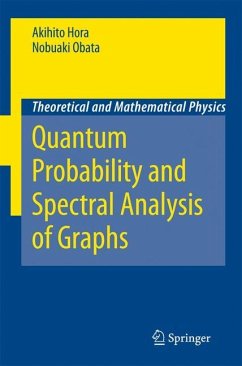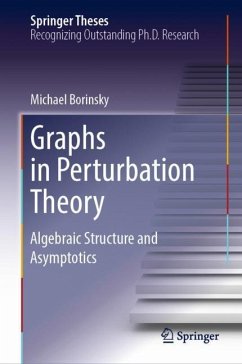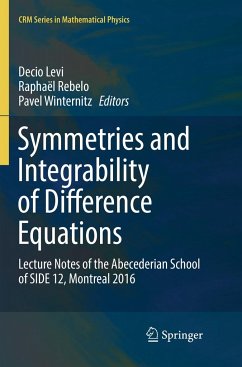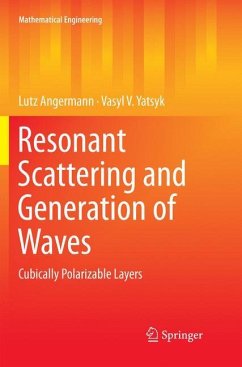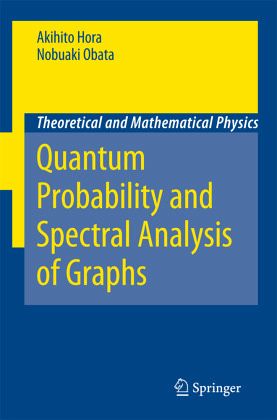
Quantum Probability and Spectral Analysis of Graphs
Versandkostenfrei!
Versandfertig in 6-10 Tagen
76,99 €
inkl. MwSt.
Weitere Ausgaben:

PAYBACK Punkte
38 °P sammeln!
It is a great pleasure for me that the new Springer Quantum Probability ProgrammeisopenedbythepresentmonographofAkihitoHoraandNobuaki Obata. In fact this book epitomizes several distinctive features of contemporary quantum probability: First of all the use of speci?c quantum probabilistic techniques to bring original and quite non-trivial contributions to problems with an old history and on which a huge literature exists, both independent of quantum probability. Second, but not less important, the ability to create several bridges among di?erent branches of mathematics apparently far from one ...
It is a great pleasure for me that the new Springer Quantum Probability ProgrammeisopenedbythepresentmonographofAkihitoHoraandNobuaki Obata. In fact this book epitomizes several distinctive features of contemporary quantum probability: First of all the use of speci?c quantum probabilistic techniques to bring original and quite non-trivial contributions to problems with an old history and on which a huge literature exists, both independent of quantum probability. Second, but not less important, the ability to create several bridges among di?erent branches of mathematics apparently far from one another such as the theory of orthogonal polynomials and graph theory, Nevanlinna'stheoryandthetheoryofrepresentationsofthesymmetricgroup. Moreover, the main topic of the present monograph, the asymptotic - haviour of large graphs, is acquiring a growing importance in a multiplicity of applications to several di?erent ?elds, from solid state physics to complex networks,frombiologytotelecommunicationsandoperationresearch,toc- binatorialoptimization.Thiscreatesapotentialaudienceforthepresentbook which goes far beyond the mathematicians and includes physicists, engineers of several di?erent branches, as well as biologists and economists. From the mathematical point of view, the use of sophisticated analytical toolstodrawconclusionsondiscretestructures,suchas,graphs,isparticularly appealing. The use of analysis, the science of the continuum, to discover n- trivial properties of discrete structures has an established tradition in number theory, but in graph theory it constitutes a relatively recent trend and there are few doubts that this trend will expand to an extent comparable to what we ?nd in the theory of numbers. Two main ideas of quantum probability form theunifying framework of the present book: 1. The quantum decomposition of a classical random variable.





